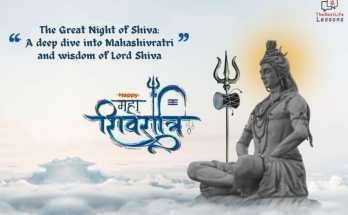The Sun rises with strong wish, enters the equinox of dreams.
From Capricorn to Cancer, the light gleams for ablution.
The celebration dawns in heaven. (AradhyaMondal)
Makar Sankranti is one of the most widely celebrated festival in whole of India with different names. It is known as Makar Sankranti in North India, Thai Pongal in Tamil Nadu and ‘Uttrayana’ in Gujrat and Rajasthan.
Assamese call it MaghBeehu and it is called SughhiHabba in Karnataka. It is known as PeddaPanduga in Andhra Pradesh, Makaravilakku in Kerala and ShishurSaenkraat in Kashmir and parts of Jammu. All the different names of the festival are presented in the table below.
| PeddaPendunga | Andhra Pradesh |
| Pongal | Tamil Nadu |
| Magh Bihu | Assam |
| Magha Mela | North India |
| Uttarayna | Gujarat and Rajasthan |
| Makaravilakku | Kerala |
| Maghe Sankranti | Nepal |
| Sakraat or Khichdi | Bihar and Jharkhand |
| Magha Saaji | Himachal Pradesh |
| Suggi | Karnataka |
| Kale Kauva | Uttrakhand |
| Maghi | Punjab |
| PoushParbon | West Bengal |
This festival is not only celebrated in India but also in neighbouring countries like Nepal and Bangladesh.Tharu community of Nepal mark this day of Makar Sankranti as the beginning of the new year.
Zodiacal significance of Makar Sankranti
People celebrate this festival according to their different religious beliefs but the prominent ground is the astrological reason behind this festival. While all other festivals of India are determined according to lunar calendar but this is the only festival that follows the solar (Hindu) calendar.
According to the popular Hindu belief, this day marks the movement of the Sun from the Zodiac of Sagittarius (Dhanu) to Capricorn (Makara) as the Sun travels on its celestial path. The word ‘Makar’ means Capricorn and ‘Sankranti’ means transition. There are 12 Sankranti’s in an year including Makar Sankranti and Karka Sankranti after summer solstice, but out of these this Sankranti is considered as the most auspicious as the Sun begins its northward movement which is considered to be the beginning of the auspicious period.
The Sun rays starts falling from Southern to the Northern Hemisphere that is why the day is known as Uttarayna.
(The planet Earth is divided intonorthern hemispheres and southern hemisphere geographically by an imaginary line called Equator.)
The arrival of Spring
The festival marks the end of winter season and beginning of the spring as the sun rays starts falling directly. The spring season is the most pleasant season in India.This festival of Makar Sankranti is celebrated in mid-January which usually falls on 14 or 15 January of the Gregorian Calendar every year. Days starts to become longer and nights shorten after this festival and finally the length of the day and night becomes equal on equinox. (March 21)
Surya Pooja: festival dedicated to the Lord Sun
Observers celebrate the day as a thanksgiving day to mother nature. Devotees take bath early in the morningspecifically in holy rivers and worship the Lord Sun, the ultimate source of all energies on the Earth. God Surya is worshipped on thisday for the life and food on our planet. The Sun is the integral part of our life which is the source of light, growth and energy. The arrival of the Sun marks the beginning of every day of our life. Life on the earth is possiblebecause of a major role of the Sun. Worship of the Sun symbolizes the triumph of light over darkness. People believe that by thanking the Sun, they may lead a happy and prosperous year ahead with plentiful harvest.
Makar Sankranti in South India
PeddaPendunga is a four – day festival in Andhra Pradesh and Telangana. The first day is Bhoghi and the second is Makar Sankranti.Kanuma and Makkanuma are the third and fourth days respectively. PeddaPendunga means a big festival comprising prayers, feasts and new clothes.
On the evening of Bhoghi, old and unused clothes are burnt into a bonfire symbolizing thereplacement of the old with new. On the second day Pongal(a dish made from Rice, Ghee and Jaggery cooked in earthen pots by the newly harvested rice boiled in milk) is served with few other delicacies.
People distribute a dish Til- gud in Maharashtra as a token to resolve ill feelings of the past and greet each other with Haldi- Kumkumceremony.
Lohri in Punjab: a festival parallel to Makar Sankranti
Punjab celebrates the festival of Lohri at this time. Children goes house to house singing popular folk songand asking for treats in some areas. Families, friends and relatives together sit around a bonfire, throw Tilinto the flames,singtraditional songs and eats dishes made from ground nuts and jaggery.
In Kerala, the festival is celebrated on the appearance of the celestial star Makara Jyothi near the Sabarimala temple.
Delicacies of the festival: healthy and delicious food
According to Ayurveda, having Til in this season helps preventing bones diseases like Arthritis. The dishes made from Til and Jaggery reduces cough so dishes made from Sesame, Til and Jaggery are prepared to eat and donate.People distribute these dishes into each other and greet with Haldi- kumkum.The festival also commences the harvest season in India. Indians believe that the first crop should be shared with everyone because the real celebration lies in sharing.
Kite Flying tradition : a joyous recreation
Let your dreams touch the sky.
Just like the kites you fly.
The calm and pleasant blue sky changes into a pandemonium of colourful kites trying to get higher and higher and finally disappearing into theheavens.TheKite flying competitions are organized in different fairs along with another fun activities associated with the weather.People draw beautiful Rangolis at their homes and andKushti competitions (wrestling) are organised instates of south India.
The medicinal benefits of Kite flying
The winters are about to end and pleasant summer is on the corner on the day of the Sankranti. Sun shine comes back after a certain break and the blue sky turns into colourful with many kites flying high. The tradition of flying kites in India has now spread in many parts of the world. This practice has its medicinal importance as well. The skin exposes to the harmless rays of the early morning Sun whichis a great source of vitamin D. The solar radiations alsoimproves skin qualities and treats illnesses associated with very dry and harsh winter season.
Makar Sankranti in 2024
The Makar Sankranti Festival is on January 15 this year( 2024). Although the rising case of covid has set alerts at few places on big gathering but still the festival can be enjoyed with families and relatives at home.
Message of the festival to everyone
The Sankranti represents the transitionand our life on the planet is sustained and nourished by various transitions of nature. The transition from harsh climate to pleasant gives the ray of hope and positivity.




